Cat Food Guide: How to Pick the Right Food for Your Cat
Choosing cat food can feel overwhelming, but it doesn’t have to be. Your cat’s health, mood, and even their bathroom habits hinge on what lands in their bowl each day. In this guide we break down the main choices – wet, dry, and mixed – and give you simple tips to make a confident decision.
Wet vs Dry: What’s the Real Difference?
Wet food packs a lot of moisture, usually 70‑80%, which helps keep cats hydrated. This is a big win because many felines don’t drink enough water on their own. Wet meals also tend to taste richer, so picky eaters often go for them. On the flip side, dry kibble is cheap, shelf‑stable, and easy to portion. It can support dental health by scraping plaque off teeth as your cat chews, though it isn’t a substitute for regular brushing.
Cost is another factor. A bag of dry food can last weeks, while wet cans run out faster and add up in price. Convenience matters, too – dry kibble is great for busy owners or for leaving out while you’re at work. Wet food usually needs a fridge and should be served in smaller portions to avoid spoilage.
Mixing Wet and Dry: Safe and Simple Tips
Many cat lovers combine both types to get the best of each world. The trick is to keep the diet balanced. Start by offering a small scoop of dry kibble alongside a single wet meal, then watch your cat’s appetite and stool. If they finish everything and seem happy, you’ve hit a good mix. If they’re leaving food behind, you might need to adjust the ratios.
Make sure the total calories match your cat’s needs – over‑feeding can lead to weight gain, while under‑feeding causes energy slumps. Use the feeding guidelines on each package as a baseline, then fine‑tune based on your cat’s activity level and body condition.
When you mix, store the dry portion in a sealed container to keep it fresh, and only open wet cans when you’re ready to serve. Any leftover wet food should be tossed after an hour to avoid bacterial growth.
Top dry brands often highlighted by cat owners include those that list real meat as the first ingredient, avoid artificial fillers, and provide a clear analysis of protein, fat, and fiber. Look for a guaranteed analysis that shows at least 30% protein and moderate fat levels. If you see “grain‑free” or “limited ingredient,” you’re usually getting a cleaner formula.
Feeding schedule matters as much as the food itself. Most adult cats do well with two meals a day – one in the morning, one in the evening. Kittens need three to four smaller meals, while senior cats may prefer a single, easy‑to‑digest portion. Stick to consistent times; cats thrive on routine and it helps prevent begging or overeating.
Finally, keep an eye on your cat’s health. Shiny coat, playful energy, and firm stools usually mean the diet is on point. If you notice hairballs, weight changes, or digestive upset, it might be time to switch formulas or talk to a vet. With the right balance of wet, dry, and timing, you’ll give your feline the fuel they need to live a happy, healthy life.
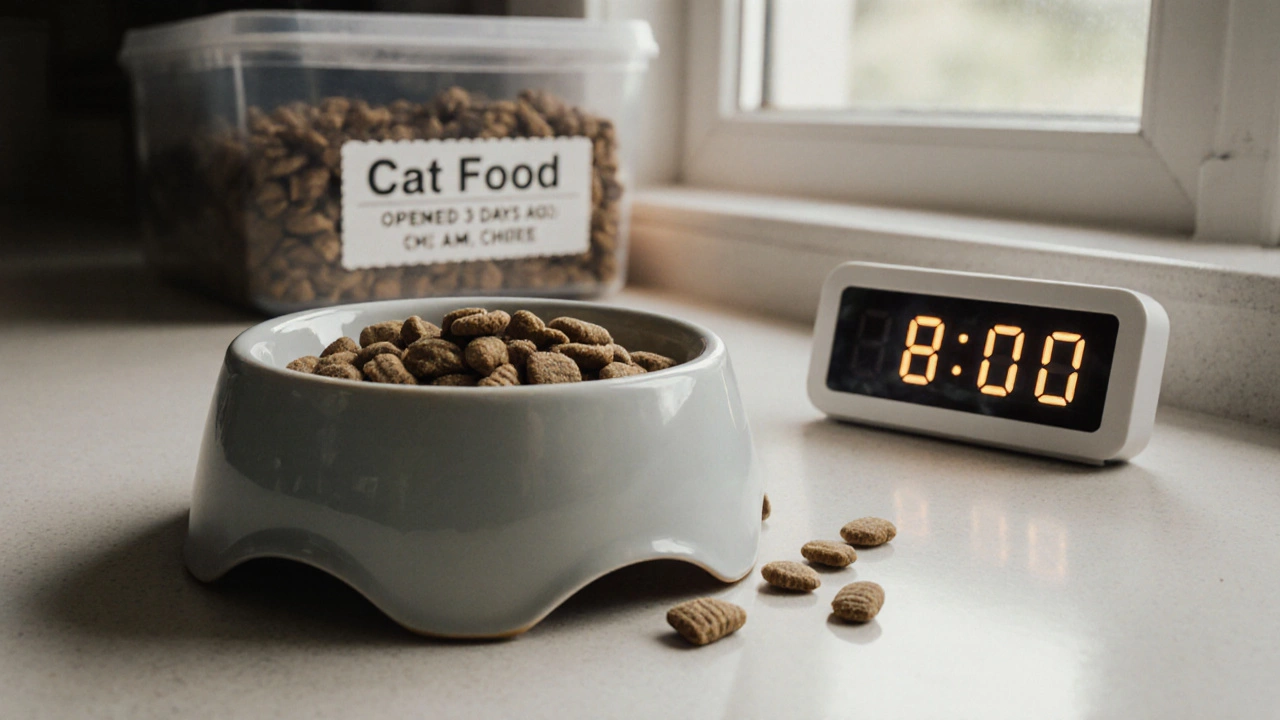
Should You Leave Dry Cat Food Out All Day? Here's What Vet Experts Say
Leaving dry cat food out all day may seem convenient, but it can spoil quickly, attract pests, and lead to weight gain. Vet experts recommend scheduled meals for better health and freshness.
View more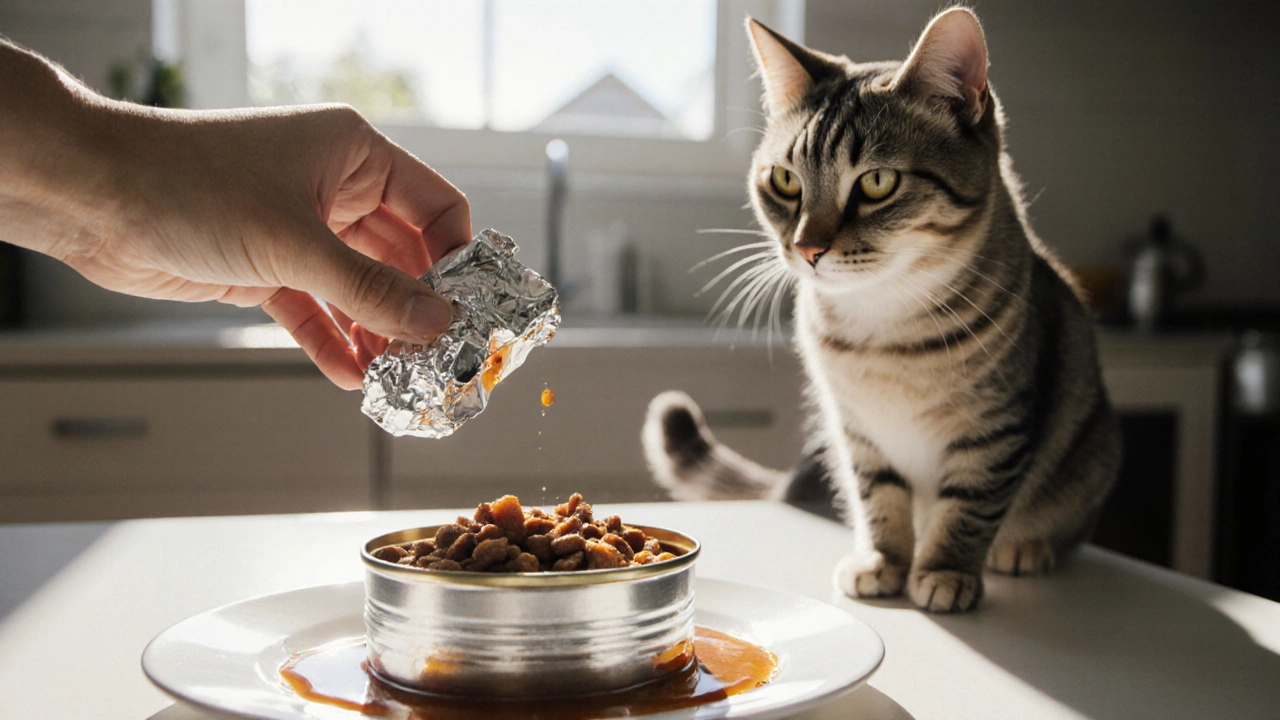
How Fast Does Wet Cat Food Spoil? Shelf Life, Storage Tips & Safety
Learn how long wet cat food lasts, how to store opened cans, spoilage signs, and safety tips to protect your cat from foodborne illness.
View more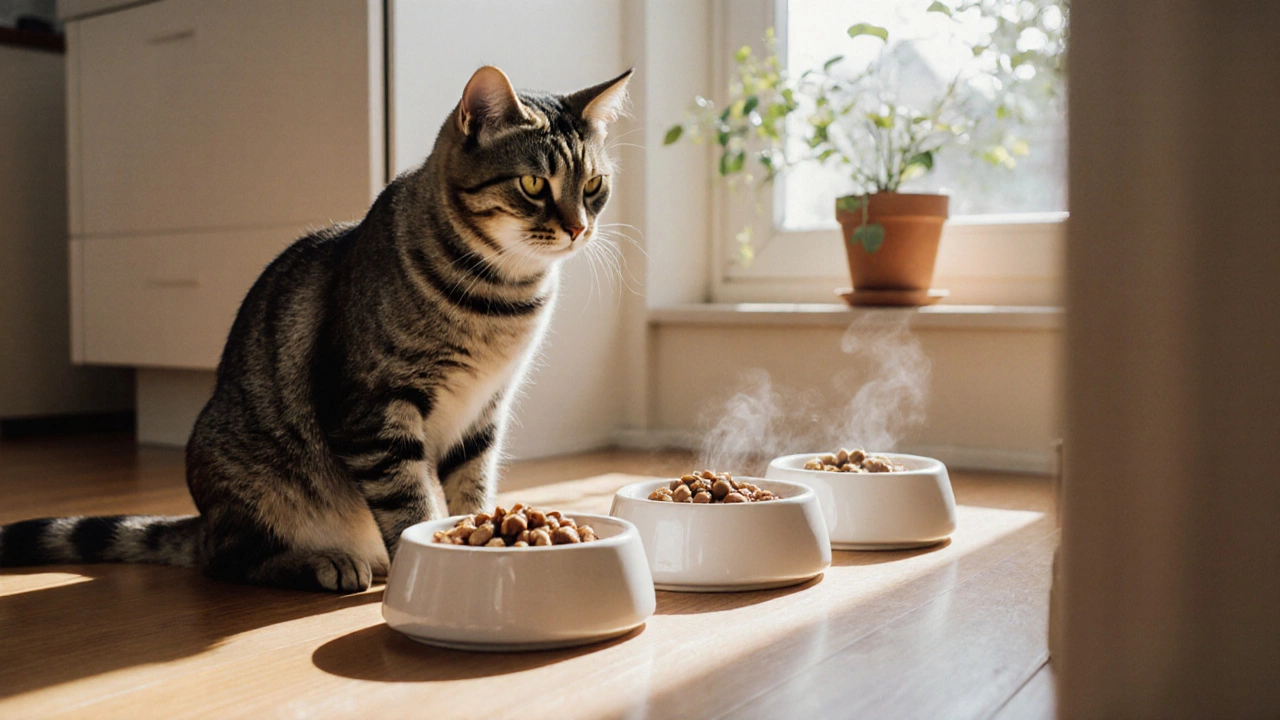
How Many Times Should You Feed a Cat? Expert Guide to Feeding Frequency
Learn the ideal number of meals per day for kittens, adults, and senior cats, how food type affects timing, and practical steps to set a healthy feeding schedule.
View more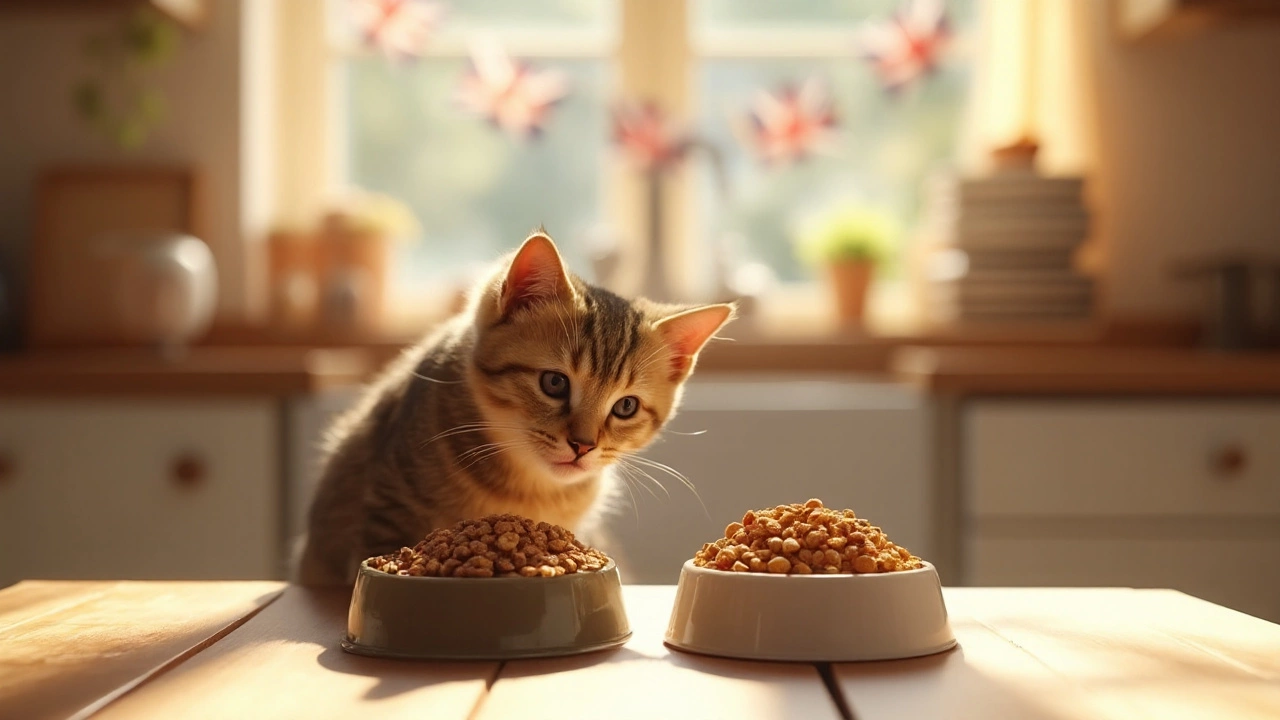
Wet vs Dry Cat Food: Which Is Better for Your Cat’s Health?
Comparing wet and dry cat food: explore nutrition, hydration, dental health, convenience, and cost to pick the best choice for your cat's well-being.
View more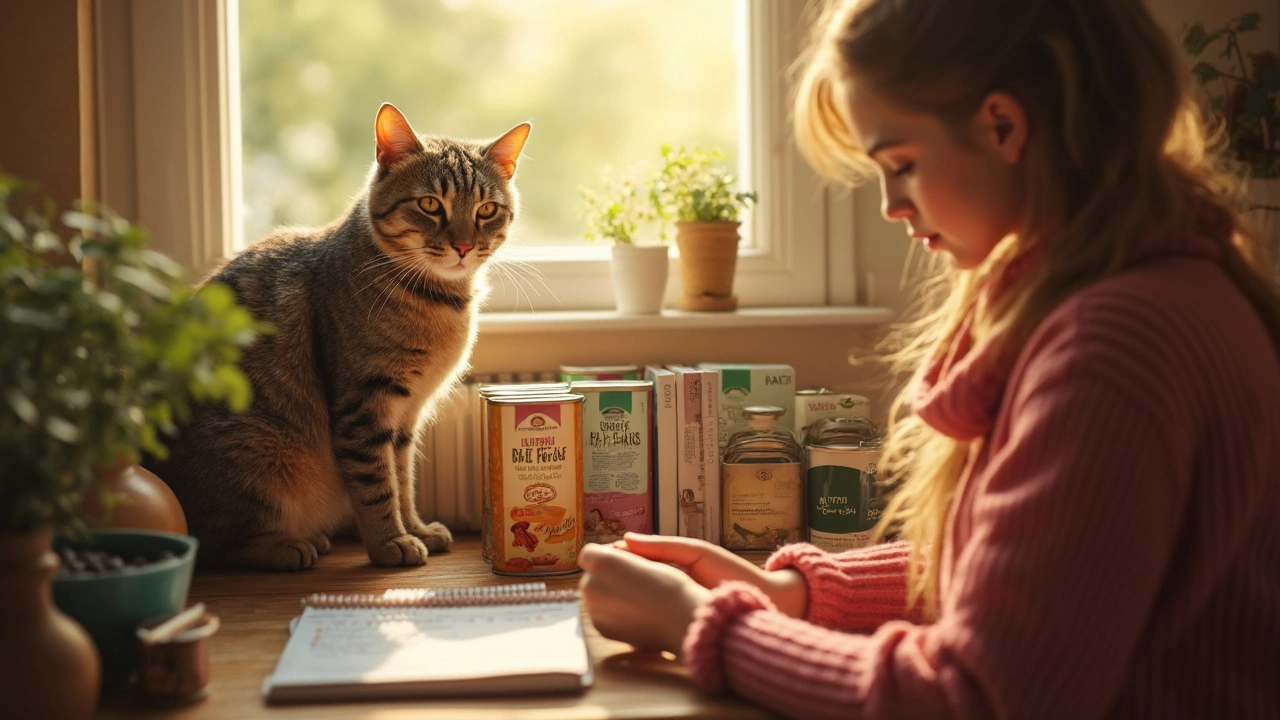
Best Cat Food: What Really Deserves the #1 Spot?
Picking the best cat food isn't as simple as grabbing the prettiest bag from the shelf. Cats have specific nutritional needs that can make food shopping overwhelming. This article breaks down what really matters when choosing the top cat food, covering quality ingredients, real-life feeding tips, and what top-rated options get right (and wrong). Cut through the marketing noise and find out how the best cat food stacks up against the rest, with practical advice for anyone feeding a feline. Get the facts, not the fluff, so your cat eats better and stays healthier.
View more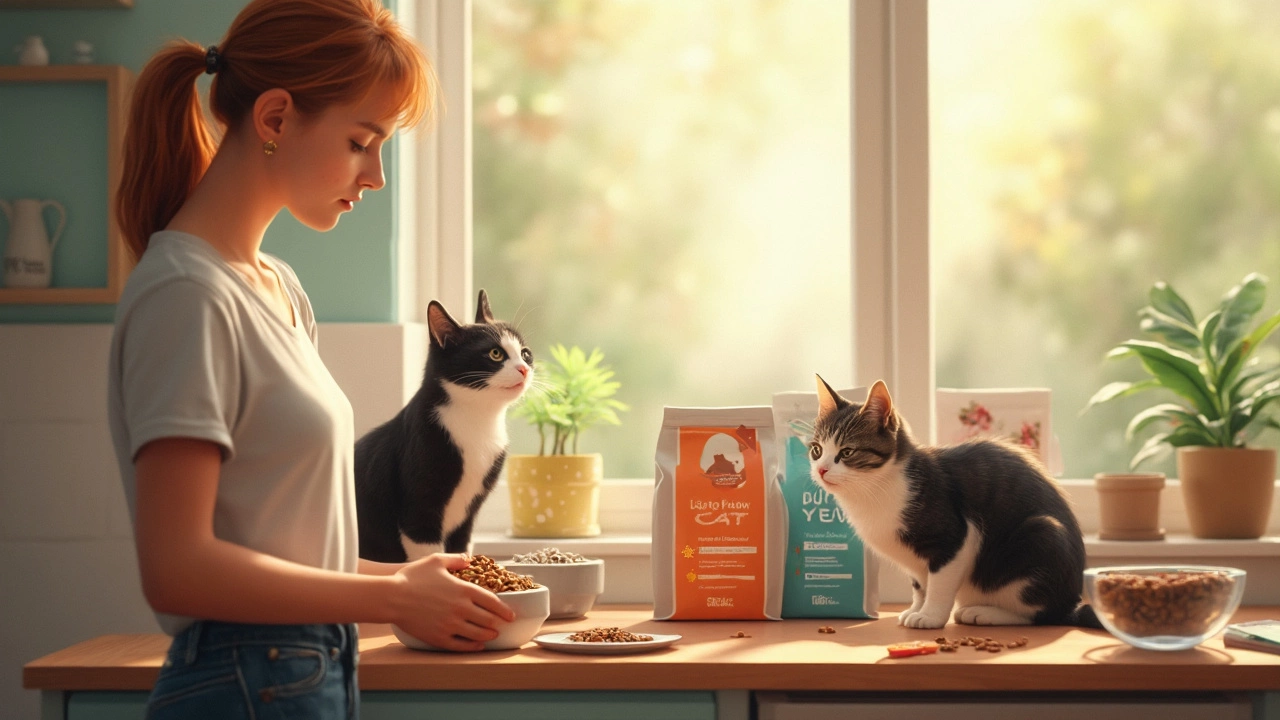
Top 5 Best Dry Cat Food Brands for Happy, Healthy Cats
Picking the right dry cat food can seriously impact your cat’s health and mood, but with countless options on the shelves, it's tricky knowing which ones stand out. This article breaks down the five best dry cat foods that really deliver on both nutrition and taste, using insights from cat owners and experts. Expect tips on ingredients to look for, common red flags, and what actually matters for your cat’s day-to-day wellbeing. You’ll get a straight talk on which brands rise above the rest and why. Perfect for any cat owner wanting to make a smart, informed decision.
View more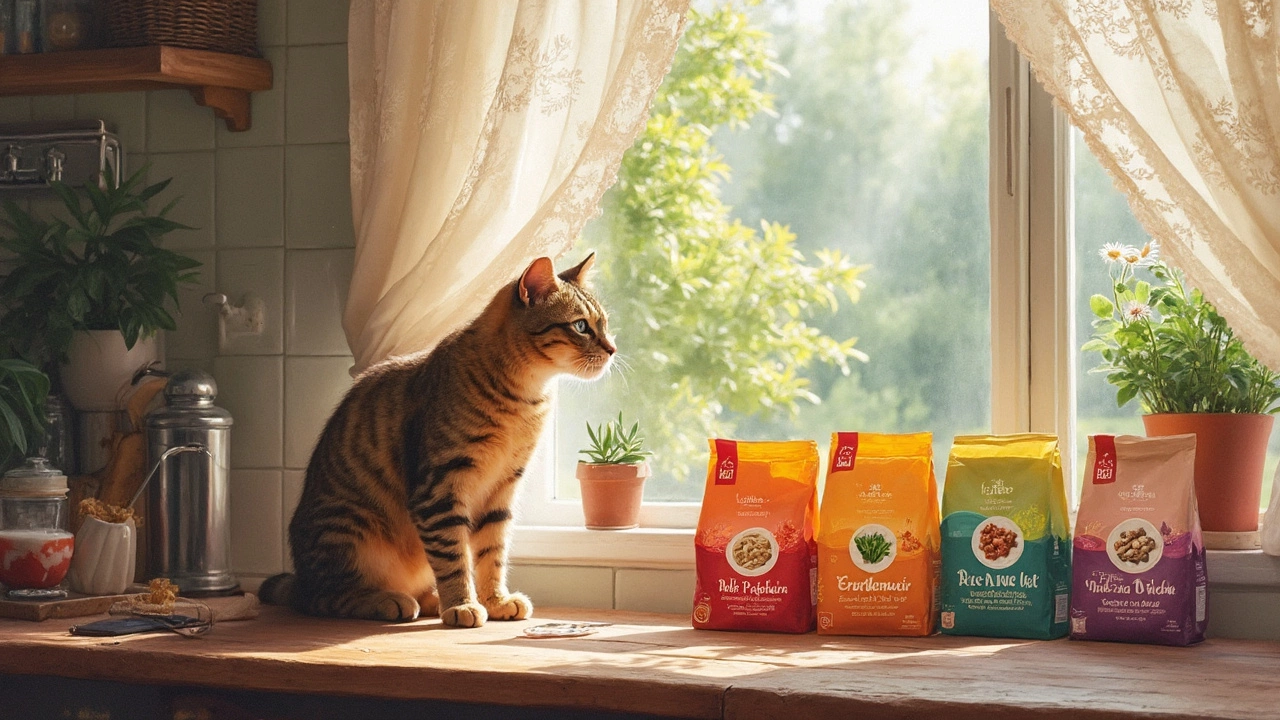
Can My Cat Thrive on Dry Food Alone?
Many cat owners wonder whether their feline companions can live healthily on dry food alone. While dry food is popular for its convenience and cost-effectiveness, it's important to consider how it impacts a cat's overall health. This article explores the nutritional needs of cats, the benefits and drawbacks of dry food, and how to make sure your cat's diet is balanced. Learn practical tips to ensure your furry friend stays happy and healthy.
View more
Is It OK to Leave Wet Cat Food Out All Day?
Leaving wet cat food out all day is a common practice, but it may not be the best decision for your feline friend. This article explores the pros and cons of leaving wet cat food out, how it can affect your cat's health, and practical tips to ensure their meals remain fresh and safe.
View more
Optimal Feeding Schedule for Cats: Balancing Health and Happiness
Determining how often to feed your cat each day is crucial for their health and well-being. This article delves into understanding the best feeding schedule for cats, taking into account age, health, dietary needs, and lifestyle. It explores common feeding patterns and provides tips to ensure your feline friend enjoys a balanced diet. Achieving the right feeding routine can significantly enhance your cat's quality of life.
View more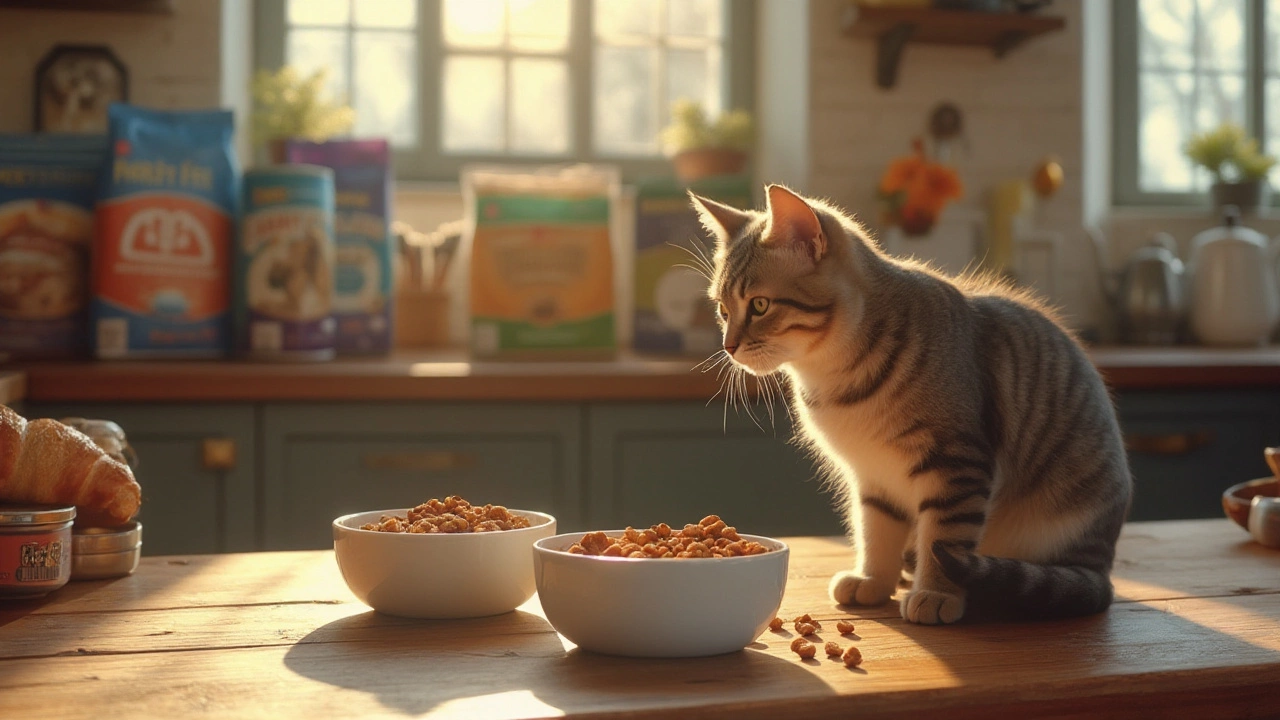
Can Wet and Dry Cat Food Be Safely Mixed Together?
Combining wet and dry cat food is a common practice among pet owners, but does it benefit your cat's diet? This article explores the reasons for mixing, potential benefits, and important considerations when creating a balanced meal for your feline friend. Discover how to ensure nutritional adequacy and why your cat might prefer a mixed feeding approach.
View more